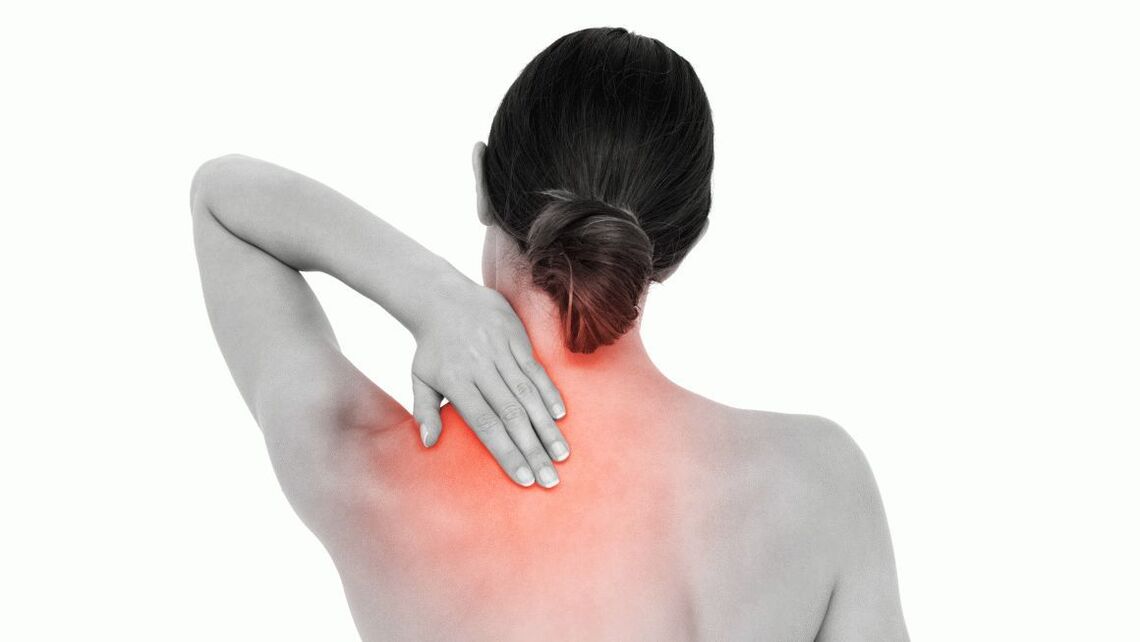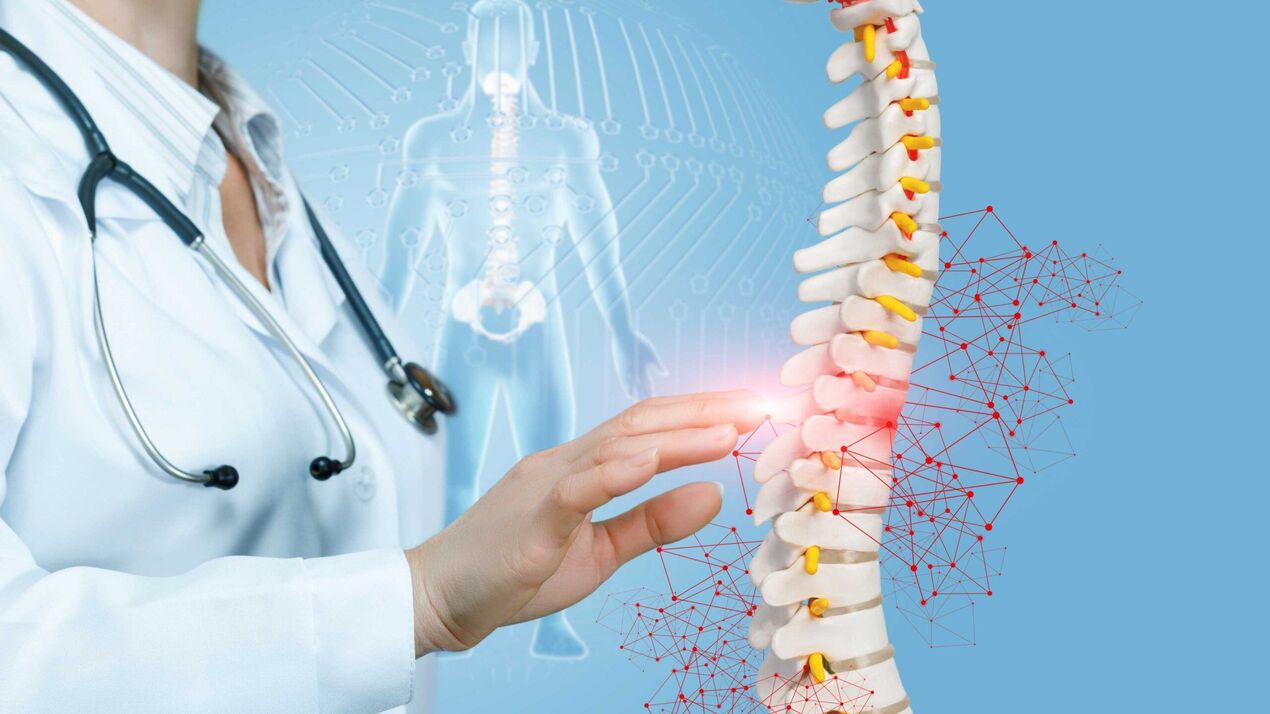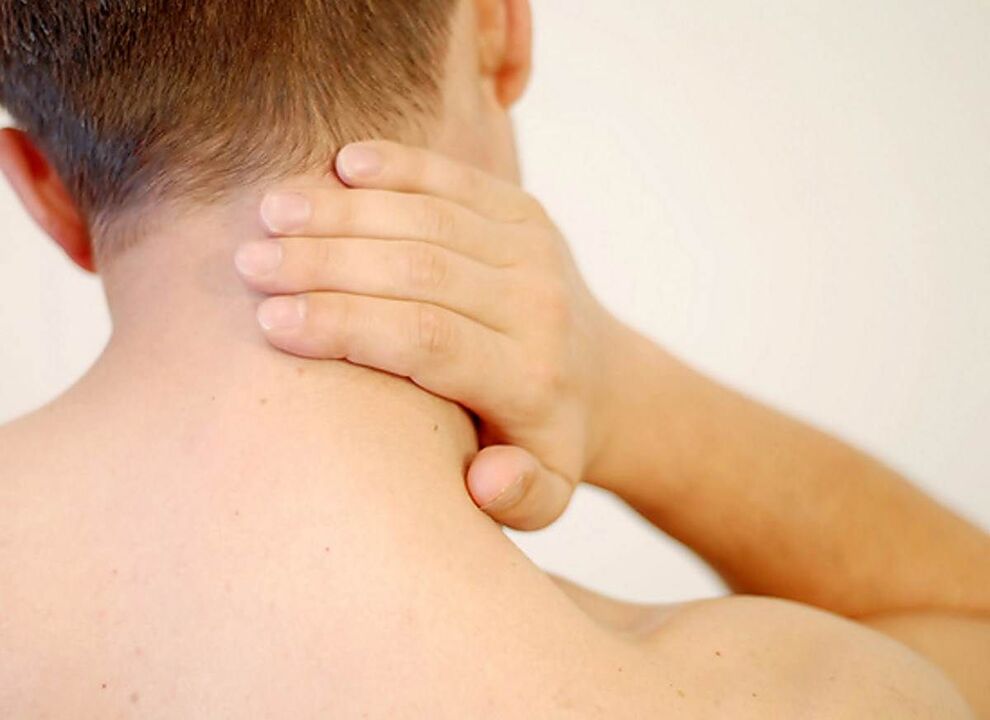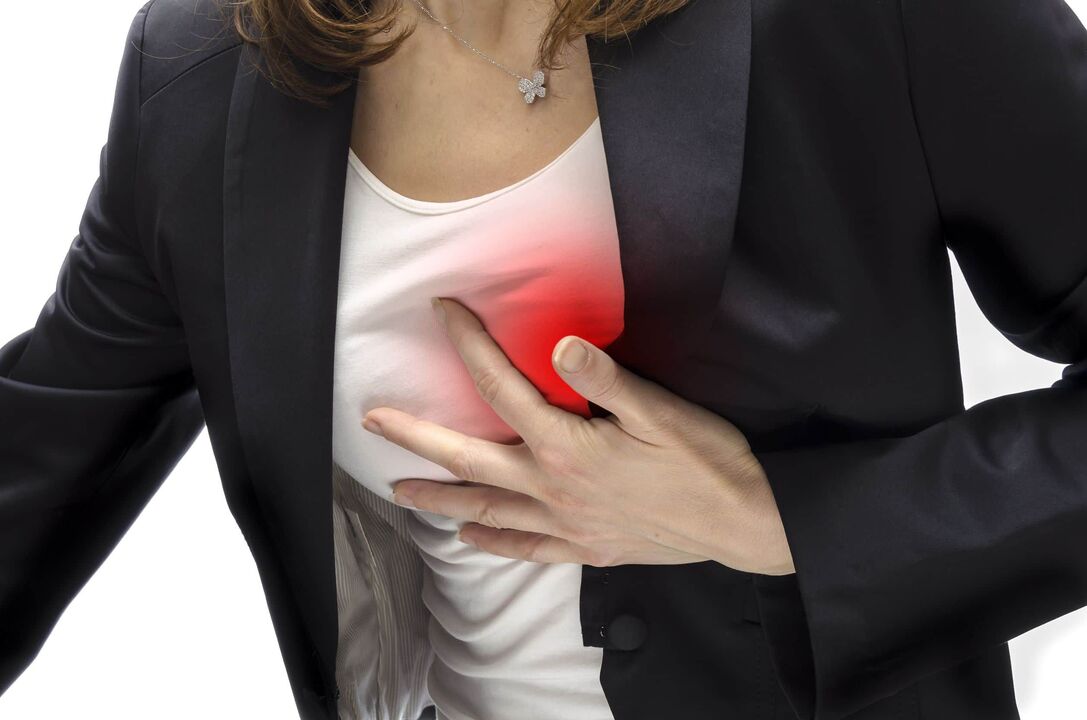
Chondrolysis is a degenerative-dystrophic lesion of the spine that leads to destruction of intervertebral discs with corresponding consequences. Osteochondritis "infects" the entire spine, but the symptoms of the disease are most pronounced when the cervical region, which is most mobile, and the lumbar region are affected. The chest area is least affected.
Signs of cervical spondylosis are diverse and often similar to other diseases, making differential diagnosis and early recognition of the disease difficult. In this article, we will consider in detail how osteoarthritis of the cervical spine manifests itself and what will help you suspect this disease.
Degrees of osteochondral degeneration
Osteonecrosis is a chronic progressive disease that occurs with periods of remission and exacerbation. Clear clinical symptoms do not appear immediately but appear after a while, when the degeneration process enters stage 2, even stage 3.
There are only 4 levels of pathology:
- The first stage is characterized by pathological changes inside the intervertebral disc. It loses moisture, leading to degeneration, decreased disc height and fissures. As a rule, there are no signs at this stage. Diagnosis can only be made by MRI of the spine. This is the most favorable stage to start treatment, because in this case it is possible to completely restore damaged discs, which cannot be done later.
- Grade 2 osteoarthritis is characterized by progressive damage to the intervertebral discs. Their height is significantly reduced, leading to sagging of spinal muscles and ligaments. All this causes instability of the damaged spinal segment, increased mobility of the vertebrae, their displacement and sliding relative to each other and the spinal axis. As a rule, at this stage, the first signs of the disease appear in the form of pain and other signs characteristic of damage to the cervical spine.
- In the third stage, protrusion and herniation of the intervertebral disc develop. Symptoms of the disease are fully expressed.
- Stage 4 is the final stage. In this case, bone spur formation and spinal deformity occur. The body tries to somehow stabilize the damaged part of the spine, which is why bone spurs develop, the ossification of ligaments and other processes lead to the stabilization of the vertebrae, butUnfortunately, this process is accompanied by vertebral subluxation and various types and degrees of vertebral subluxation. spinal deformity.

The nature of the symptoms of cervical spondylosis
Symptoms of cervical spondylosis are related to 3 negative impact mechanisms of this disease:
- Compresses directly on the spinal cord, which runs in the spinal canal. It should be noted that this is very rare with progressive degeneration and its complications. Compression of the neural tissue of the spinal cord can be caused by a large intervertebral hernia, protruding directly into the lumen of the spinal canal; spinal stenosis (narrowing) due to degeneration; Dislocation, mild dislocation, fracture of damaged vertebrae.
- Negative effects on the structures of the peripheral nervous system (spinal cord roots and nerve fibers) exiting the cervical spine. They can become compressed between adjacent vertebrae or herniations and can become inflamed and irritated. All this leads to some serious symptoms. This is the most common group of signs of cervical spondylosis.
- Negative impact on blood vessels passing near the damaged spinal area. In particular, a very important blood vessel is of clinical importance - the vertebral artery, which passes through the foramina of the cervical vertebrae into the cranial cavity and supplies blood to the posterior third of the brain and cerebellum.
Let's look in detail at each group of mechanisms and the symptoms they cause.
Symptoms related to spinal cord injury
As mentioned, spinal cord compression with cervical spondylosis is very rare. This is a very serious condition that can cost a person not only his health but also his life.
Injuries to the upper cervical spine are life-threatening. The cardiovascular and respiratory centers are affected, leading to immediate death. When compressed at the level of 3-4 spinal cord segments, quadriplegia develops (paralysis of all limbs and muscles below the wound). The respiratory muscles and diaphragm are also affected, which can lead to respiratory arrest and death.
If damage occurs in the 4th-5th segment of the spinal cord, quadriplegia will develop but without respiratory failure. When 5-8 segments of the spinal cord are compressed, different muscle groups of the upper limbs are affected and paralysis of the legs and disorders of the pelvic organs occur.
Symptoms related to nerve damage
Pain syndrome
First of all, it is necessary to note the pain syndrome, which can be chronic (cervical pain) and acute in the form of lumbar pain (cervical pain). The pain occurs in the neck, occipital part of the head and shoulder area. It is often caused by irritation, compression and inflammation of the nerve roots of the cervical spine, as well as pathological spasms of the muscles in this area innervated by these nerves.
The pain associated with neck pain is almost constant, aching, and varies in intensity. In principle, pain syndrome can be tolerated. It appears or intensifies with sudden movements, turns, and tilts of the head. Movement in the neck is accompanied by a characteristic crunching sound.
Cervical pain occurs suddenly in the form of a shot or electric shock. It is so intense, it reaches one of the hands. Lasts a few seconds or minutes, then gives way to neck pain. It is usually caused by sudden movement and compression of the nerve.

Nerve root syndrome
All major nerves of the upper extremity (medial, ulnar, and brachial) are formed from nerve fibers originating from the cervical spine. Therefore, when there is degeneration of humeral neck cartilage, these nerve structures may be affected. All of these nerves are mixed, meaning they have both sensory and motor functions. Depending on which roots are affected, symptoms will vary. For example, the 2nd or 3rd finger may lose sensitivity and one or more muscles may become paralyzed. All of these signs of nerve damage are classified into separate syndromes that only a neurologist can identify.
Occipital neuralgia
Occipital neuralgia develops when the greater and lesser occipital nerves, formed by the 2nd, 3rd, and 4th pair of cervical spinal nerves, are damaged. When these structures are compressed, irritated or inflamed due to degenerative processes in the spine, headaches will appear in the back of the head, something women often complain about.
This pain is so typical that only its description allows an accurate diagnosis in 90% of cases. It is also known as cranial pain imaging. The pain occurs suddenly, is localized on one side (rarely on both sides), the patient compares the nature of the pain with an electric shock. The attack lasts a few minutes, but can repeat several times a day. The pain occurs on the posterolateral surface of the neck and radiates upward to the occiput (repeating the anatomical course of the occipital nerve). At the same time, sensitivity disorders in the skin on the back of the head may develop (numbness, crawling sensation).
Heart syndrome
This name is due to the fact that the manifestations of cervical spondylosis are very similar to angina and other heart diseases. The cause of this phenomenon is damage to the nerve fibers that supply the pectoralis major muscle and the phrenic nerve, which are woven into the pericardium.

The cause of pain is spasm of the pectoralis major muscle due to pathological impulses along damaged nerve fibers. At the same time, patients very often confuse such pain with a heart attack. Unlike coronary pain, pain syndrome due to cervical spondylosis has a long duration (sometimes hours or days), does not occur with angina, is not related to physical activity but isrelationship with body posture. The pain increases with sudden movements, turning the head, coughing, sneezing, this does not happen with angina. Anti-anginal drugs (nitroglycerin, etc. ) will not be effective.
Important! In any case, such symptoms require careful differential diagnosis because atypical variants of angina and heart attack also occur. In order not to miss a serious illness, you first need to do an electrocardiogram. With osteonecrosis, no pathological changes will be recorded.
Symptoms related to vertebral artery damage
Compression of the vertebral artery during cervical spondylosis can cause a large number of unpleasant manifestations, mainly associated with reduced blood flow and hypoxia in the part of the brain nourished bythis circuit (the posterior part of the brain and the hindbrain). cerebellum).

Signs of vertebral artery syndrome:
- headaches that are diffuse or pulsatile in the back of the head, temples, and parietal region;
- dizzy;
- nausea and vomiting;
- visual disturbances;
- tinnitus, hearing loss;
- impaired coordination and balance;
- the development of drop attacks (sudden falls without loss of consciousness due to sudden turns of the head);
- memory loss, reduced work performance, ability to concentrate.
Important thing to remember! With pronounced changes in the spine, the artery can be compressed so much that it leads to the development of an ischemic stroke in the vertebrobasilar region of the brain. Therefore, it is important to suspect pathology in time and take all necessary measures to improve the health of the spine and prevent further pathological changes.
Frequently asked questions
What symptoms come with cervical spondylosis?
Symptoms of cervical spondylosis may include neck pain and stiffness, headaches, dizziness, ringing in the ears, and tingling or numbness in the arms and shoulders.
How can you relieve the symptoms of cervical spondylosis?
To reduce the symptoms of cervical spondylosis, you should exercise, maintain correct posture, avoid sitting in one position for a long time, use special pillows and mattresses, and use physical therapy methods. Whether.
Helpful advice
Tip #1
Pay attention to pain in the neck, shoulders and arms, this may be a symptom of cervical spondylosis. The pain can be sharp, dull, or localized to certain points.
Tip number 2
Pay attention to numbness or weakness in the arms, fingers or shoulders, as this could also be due to cervical spondylosis.
Tip number 3
Pay attention to headaches, dizziness and tinnitus, as these symptoms may also be related to cervical spondylosis.












































